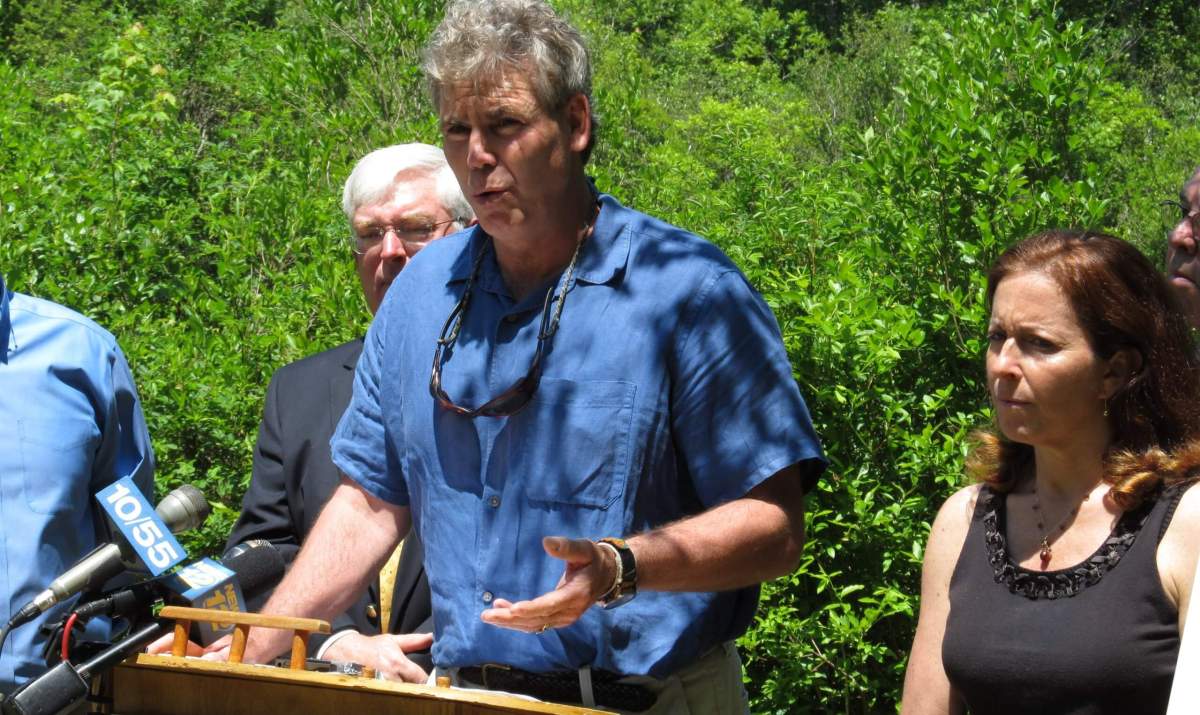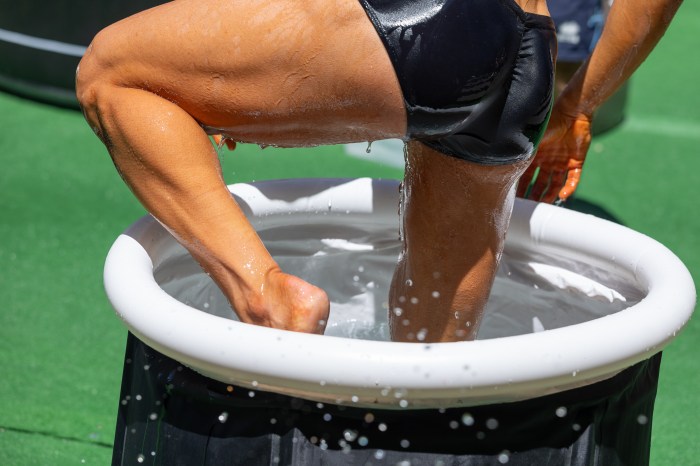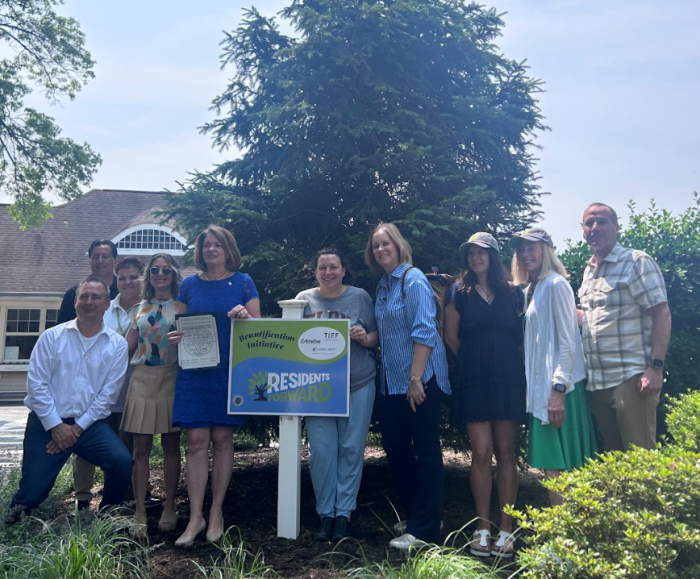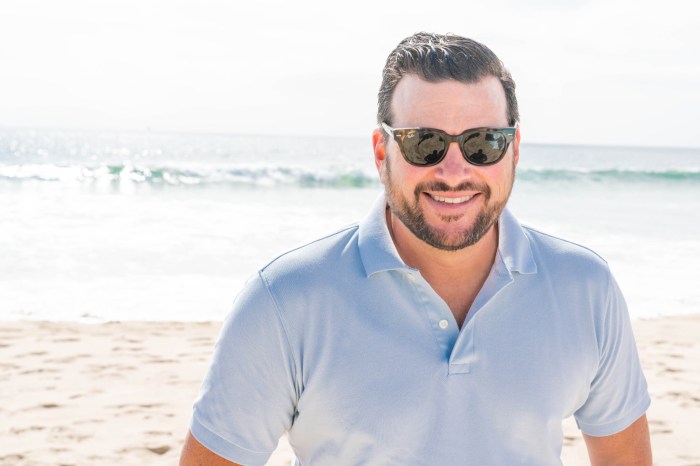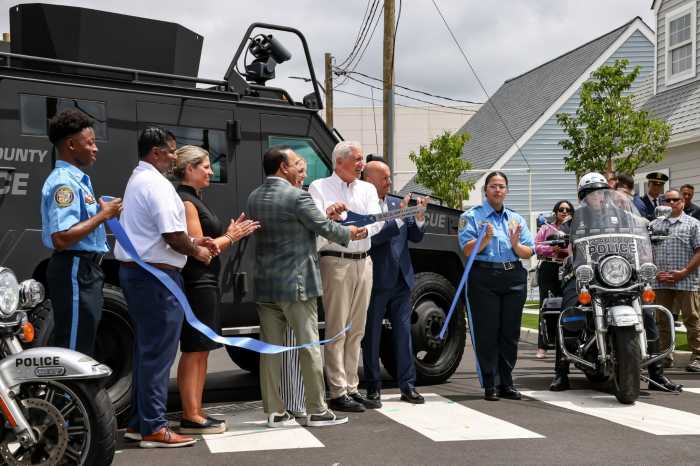
The Suffolk County health department’s draft plan examining declining quality of drinking and surface water lacks a protection plan to reverse the trend, according to some of Long Island’s top environmentalists.
Leaders of five local environmental organizations criticized Suffolk County’s Comprehensive Water Resources Management Plan during a news conference at Camp Olympia in Yaphank on the banks of Carman’s River. They argued the plan doesn’t go far enough to combat contamination of aquifers—underground drinking water supplies that a host of chemicals are seeping into.
“What we’re here today to do is to invite all of you to talk…to every person that has the power of the purse, and say, ‘Look at the data, see what it says,’” said Bob DeLuca, president of the Group for the East End.
DeLuca and his fellow environmentalists pointed to, among other things, the number of pesticides detected in Suffolk County drinking water rising from eight in 1987 to 80 in 2005. The five groups co-authored a report highlighting their concerns about the management plan, which they sent to the health department.
“We are allowing a ‘cocktail of chemicals’ to enter our drinking water supply with no action plan to prevent it, and that is not a good public health protection policy,” said Adrienne Esposito, executive director of the Citizens Campaign for the Environment.
Walter Dawydiak, chief engineer of the Suffolk County health department, countered that many of the statistics regarding pesticides in drinking water are misleading.
“The reason that a lot more [pesticides] have been detected is that we’ve developed methods to measure for them, and we’ve developed the capabilities to measure down to much lower levels,” said Dawydiak.
He added that many pesticides have been banned and the levels are steadily decreasing.
“We probably have the biggest database in the country on pesticides and groundwater and drinking water here in Suffolk County as a result of our investigation and monitoring,” said Dawydiak.
Richard Amper, executive director of the Long Island Pine Barrens Society, believes that addressing this problem should be the county’s top priority.
“Every Long Islander should be concerned about this trend,” said Amper. “There are no concrete operational recommendations to change this downward trend.”
Dawydiak said that the county’s drinking water is safe, but agreed with the environmental groups in the need to protect the county’s groundwater and waterways.
“Unless we work harder at protecting our groundwater and the effect that it has on our surface waters, our future is bleak,” said Kevin McDonald, conservation manager of The Nature Conservancy.
“It’s a sad day for Long Island when these waters become sour,” added Kevin McAllister, The Peconic Baykeeper.
The advocates remained optimistic nonetheless.
“This is obviously a great concern to all of us here, but we are not pessimistic,” said Amper. “Once we know the problem, we should be able to provide solutions.”
In their report, the groups’ offer a 10-step recommendation program to attack the problem, including the acceleration of land protection programs, the regulation of agricultural practices and upgrading septic systems in the county, most of which is not served by sewers.
They also have called for federal and state hearings on the subject.
Dawydiak said that the management plan is will undergo revisions after the open comment period concludes Aug. 1. The goal is to have an agreed upon plan by the end of the year, he said.
Amper added: “This is a problem that Long Island has to solve, and this is a problem Long Island is going to solve.”




